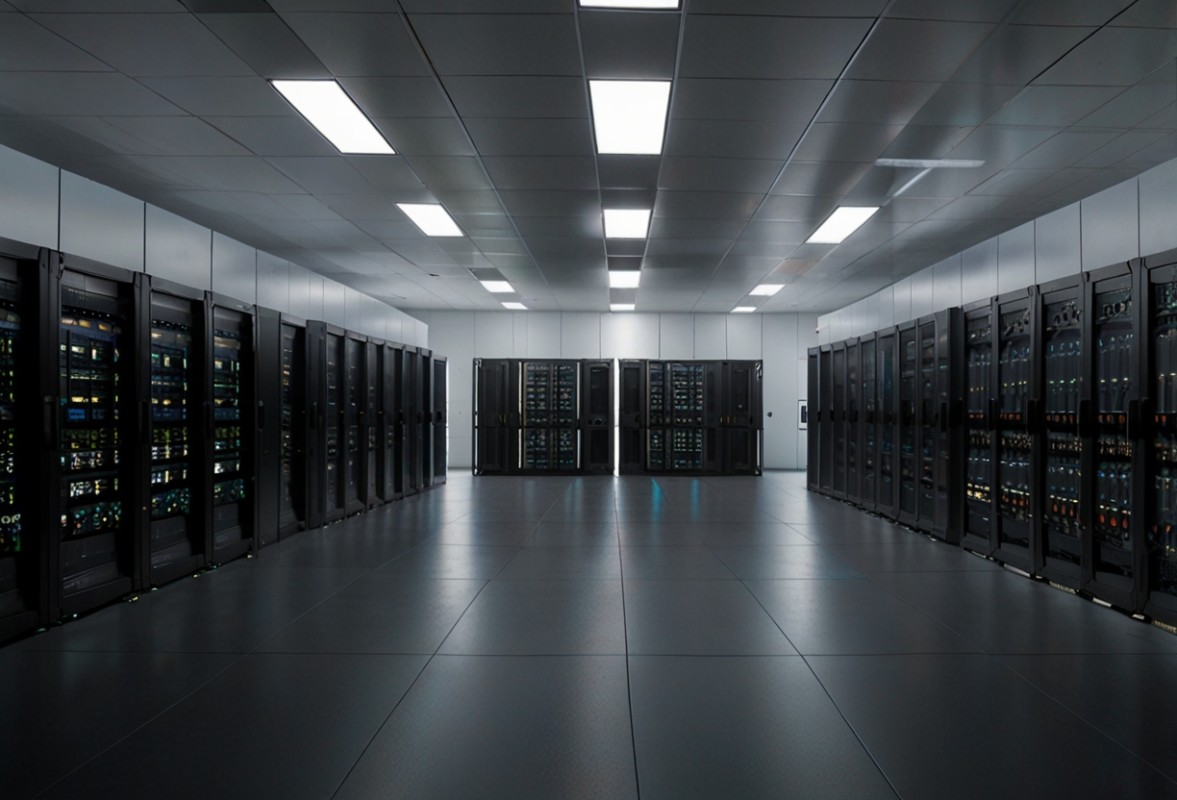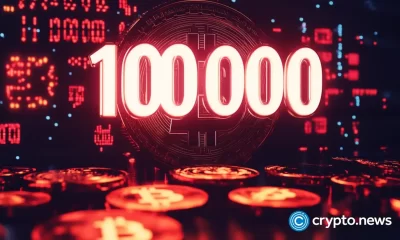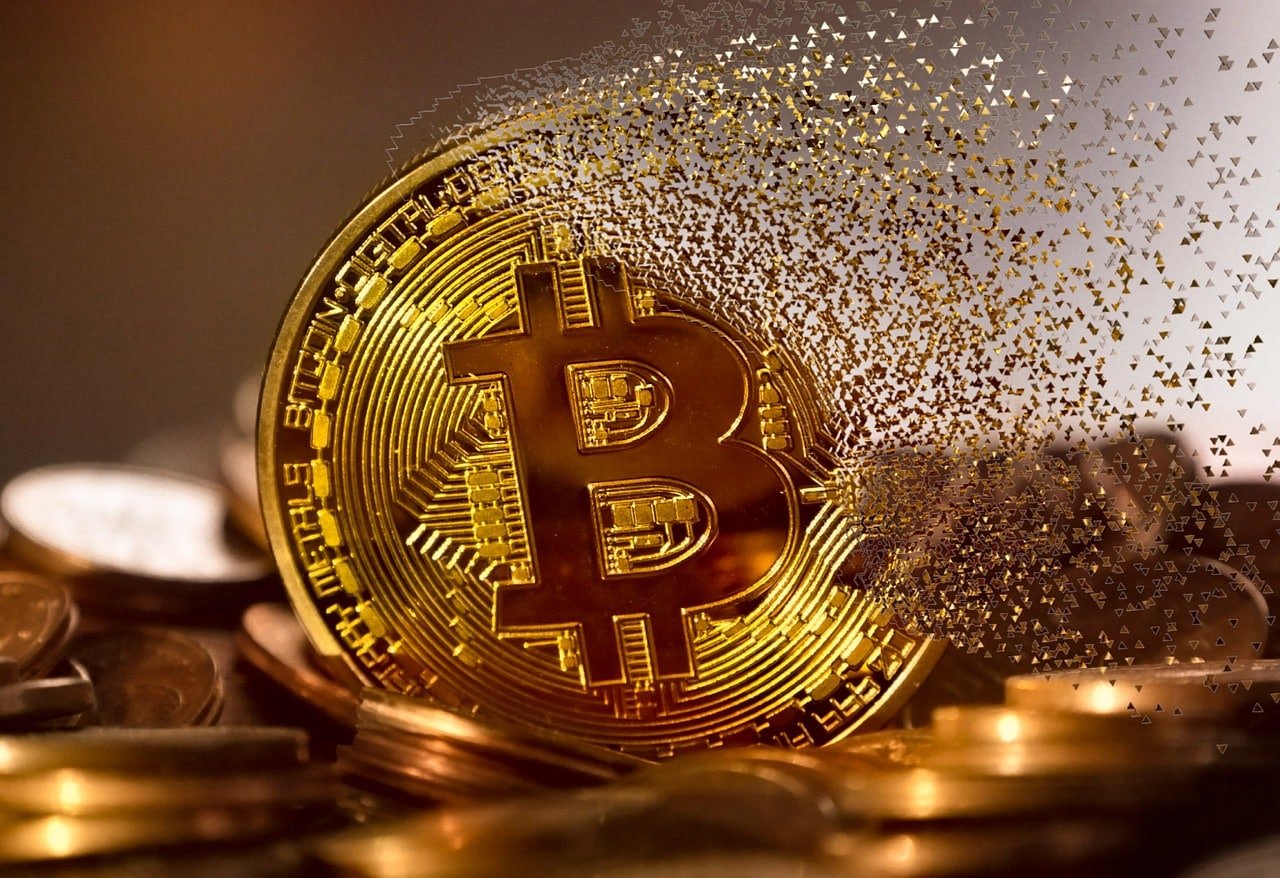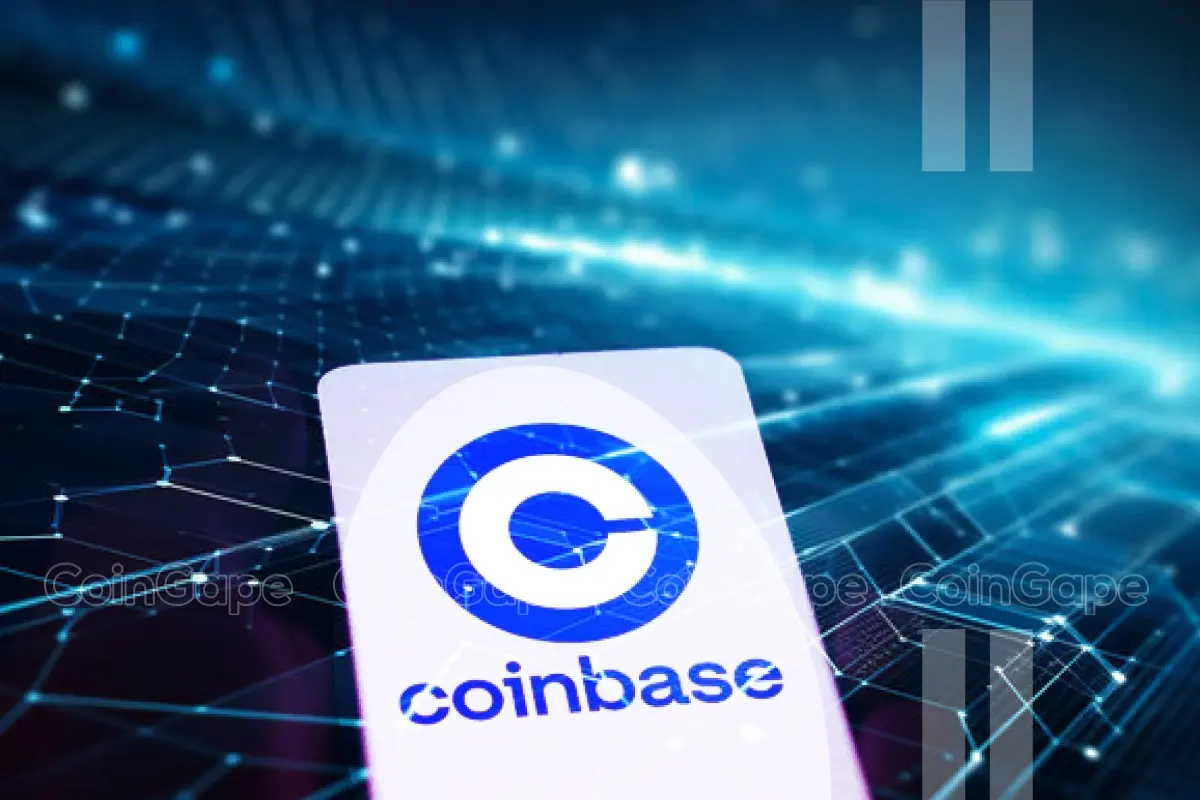AI
Compute Maximalism: The Symbiosis Between Bitcoin Mining and AI
Published
4 months agoon
By
admin

The story of human progress can be simplified into the story of increasing energy utilization. We harness energy to create order, both in terms of biology and society. Energy surpluses allow for every form of wealth creation, which in turn produce new technologies to effectively harness yet more energy. This truth has inspired famous concepts such as the Kardashev scale, which measures civilizations by their ability to harness energy resources towards useful ends.
Compute is a natural continuation of this endeavor. Modern digital technology transforms ever greater quantities of electricity into advanced value-creating processes. The most recent surge in demand for compute has come from two technologies in particular: bitcoin mining and, more recently, high performance compute (“HPC,”) in particular the use of Graphics Processing Units (“GPUs”) for artificial intelligence. The meteoric rise in energy consumption by these technologies have raised many questions: What impact will these power-hungry technologies have on our energy systems? Given their mutually voracious use of energy, what interplay will they have with each other? What do these developments mean for humanity?
We explore the essential characteristics of these respective technologies, and how they offer alternative markets for excess power that can in fact improve the efficiency of energy systems. Based on this exploration, we also argue that bitcoin mining and HPC are complementary rather than competitive. As we’ll see, their respective trade offs offer a symbiotic ability to maximize the value created from energy resources, which in turn benefits society as a whole.
In short, we argue for compute maximalism.
Energy
Modern technology depends on energy converted from a wide array of sources into electricity, and this comes with certain challenges and tradeoffs. The primary of which is limited portability.
This is due to several simple realities. Electricity requires a grid, essentially a massive series of circuits which transports energy in real time. The grid must remain in balance, meaning the generation must roughly equal demand at any point in time.
This is difficult for two reasons:
First, energy resources are not always conveniently distributed, have long lead times to develop, and have varying degrees of dispatchability.
Second, transmission as well as storage are both expensive, have similarly long lead times, and experience inherent inefficiencies. An estimated 8-15% of electricity is lost to transmission and distribution losses by the time it reaches local consumers, and this figure is even higher for long term battery storage.
The result is that it will always be cheaper and more efficient to consume generated electricity immediately at the source, than to transport it over time or space. As such, the most efficient solution isn’t to more widely and inefficiently transport electricity to where it can be used, but to move use cases to the electricity. Compute is an ideal use case for such excess electricity because it is power dense, largely portable, and scalable; we are yet to find a limit on our demand for compute. Meanwhile “meatspace” constraints are strong limiting factors for legacy forms of energy sinks like aluminum smelting and manufacturing.
Bitcoin mining in particular has emerged as such an ideal use case for local surplus power, providing a dispatchable and revenue-generating load to balance the grid. More recently the demand for High Performance Compute, in particular GPUs, is also having unignorable impacts on the utilization of energy as well. Many are expecting these two technologies to compete over the same energy resources, but as we explore the characteristics of each, the potential symbiosis will become self-evident.
Bitcoin Mining
Bitcoin mining can be thought of as a permissionless energy sink. Bitcoin’s proof-of-work consensus mechanism amounts to proof of energy-intensive computation. Miners must perform this energy-intensive computation to create new blocks of transactions, thereby earning bitcoin as a reward. It is this proof-of-work that provides global settlement assurances in a decentralized and permissionless way.
In practice, this looks like millions of computers (these days, application specific integrated circuits or “ASICs”) running in bare bones data centers around the world. One of the beautiful things about bitcoin mining is its permissionless nature; anyone anywhere in the world can plug in an ASIC. In effect, Bitcoin allows miners around the world to participate in a global energy market; whoever has the lowest cost of power has the highest margin.
This global decentralized network is part of the reason why Bitcoin’s adoption has steadily continued, as people seek a new monetary and financial system that is active 24/7, lacks a single point of failure, and sidesteps the perverse incentives of politically captured central bank monopolies.
Bitcoin mining is distinguished by the following characteristics relative to GPU/HPC infrastructure:
- No customers
- No customer acquisition
- No support
- High interruptibility
- Low operational complexity
- Low connectivity requirements (Less than 100MB/s)
- Low margin (generally)
HPC
data center GPUs are the latest form of HPC, the demand for which has exploded in the previous 2 years due to quickly escalating interest in AI/ML breakthroughs which rely on it. These technologies have unlocked whole new categories of digital operations and functions which were not previously possible, with the resulting use cases only just beginning to be explored. The sudden explosion in interest in these technologies has quickly made NVIDIA, the leading manufacturer of the underlying GPUs, the most valuable company in the world.
Initially this sudden spike in demand created an intense bottleneck in the production of sufficient units of GPU itself. This however was temporary and over time continues to be alleviated by increased production, with focus quickly switching to a new bottleneck: Data center rack space with cheap power. The result has been an explosion in new data center build outs, wherever a large amount of steady power can be sourced. This has brought GPU infrastructure into competition with Bitcoin mining in many areas with excess local power.
Relative to Bitcoin mining, GPU/HPC has these is distinguished by these characteristics:
- Customers
- Customer acquisition
- Customer support
- Low interruptibility
- High operational complexity
- High connectivity requirements (10 – 100GBs)
- High margin (generally)
Complimentary Competition
The demand for both Bitcoin and AI/ML technologies has taken off in the last decade, a testament to their utility to society. This demand has led to the proliferation of their respective compute resources.
To reduce operating costs, both markets seek excess power to utilize as it tends to be cheaper. This naturally resolves some of the grid inefficiencies discussed above, but it does mean that data center builders and operators will find themselves asking which form of compute to support and invest in for the same amount of available power.
Both forms of compute are energy intensive and relatively location-agnostic (barring legal or jurisdictional considerations beyond the scope of this paper) bringing them into seeming competition, but they can in fact be highly complementary tools for maximizing utilization and profit from such excess or stranded electricity.
GPU workloads have higher operational complexity, and low interruptibility, as well as higher upfront capital investment. That makes it a poor choice for taking advantage of transient surpluses of power, such as the peak window of energy production by solar panels for instance. Unlike bitcoin mining, GPUs have customers, who are typically sensitive to issues such as uptime and availability. There are exceptions, such as spot instances and frameworks which can failover from such instances, but generally speaking due to the existence of a customer the interruptibility tolerance of GPU infrastructure will never match that of bitcoin mining. Coupled with the higher capital costs and complexity, in these situations we can expect bitcoin mining to continue to grow and dominate as a highly flexible, dispatchable load to the grid.
Consistent excesses in power on the other hand, such as a largely fixed delta between the base generation capacity of hydropower or nuclear sites and their surrounding consumption, are ideal opportunities for GPU infrastructure to close the gap and establish new baseline consumption and equilibrium. These situations favor the low interruptibility of GPU infrastructure, and justify the added expenditure and operational complexity in order to secure substantially higher revenues. So long as the supporting bandwidth is available to facilitate GPU workloads (at least 10GB/s, ideally 100GB/s), these sites will always provide more profit opportunity than if allocated exclusively for bitcoin mining.
Hybrid data center Strategies
There are also strategies which can utilize both technologies in tandem to maximize revenue and return on investment.
First, bitcoin mining could be used as an initial load for energy resources before the site is suitable for high performance compute. Examples include: (1) using semi-portable modular bitcoin mining data centers to monetize power while the remaining infrastructure for an HPC data center (redundant power/internet lines, buildings, backup energy systems, etc.) is built; or (2) pioneering stranded energy resources with bitcoin mining, some of which may eventually be used for HPC. In fact, Core Scientific’s recently announced deal with CoreWeave could be viewed as an example of this occurring in the wild, as bitcoin mining led to the development of a large substation and data center shell that would eventually be used for HPC.
A second, more advanced strategy is to co-mingle HPC and Bitcoin mining workloads in tandem, using Bitcoin mining as a counter weight to balance fluctuations in HPC workload power draws. While HPC loads require reliable power, “inferencing workloads” which host production AI/ML models can fluctuate based on levels of real time use by users, leading to typical cycles of high activity and power consumption and low activity and lower power consumption. To date, the value for such HPC has substantially outweighed any inefficiencies from fluctuating power use, but the highly flexible and interruptible nature of Bitcoin mining can be used to provide stable power draw and in turn lower effective power rates, in addition to providing additional revenue for the data center overall. Some are describing this strategy as a “mullet data center,” with AI in the front and bitcoin in the back. While it is still early, this approach promises to utilize the best of both HPC and bitcoin mining to offer the most value maximized data center deployments possible with current technology.
Industry Implications
Until recently, the data center industry has been dominated by colocation providers. These providers build the facilities used to host industrial servers, and lease out space, power, connectivity, and sometimes the servers themselves to tenants. Traditionally, the majority of these tenants have been large enterprise and hyperscale cloud providers. In many cases these hyperscale and enterprise tenants have also built their own data centers to support their own growth.
Since roughly 2017 bitcoin mining has truly entered the picture at an industrial level, with entire data center complexes being built solely to support Bitcoin mining in areas with extreme deltas in produced and consumed electricity. Now in 2023 and 2024 we’ve seen shifts in the market even more notable and disruptive. With the explosion in demand for GPU infrastructure, many former colocation focused data centers have ventured into buying and hosting this GPU infrastructure themselves. Meanwhile hyperscalers are moving behind-the-meter to co-locate with large baseload power plants, seeking cheap reliable power for the new surge in HPC demand. This is particularly notable as intermittent renewables have been the most popular form of generation in recent years, primarily due to government subsidies.
We anticipate the following:
1. Continued increase in energy demand for both forms of compute.
2. New data center construction as the next bottleneck of expanding HPC footprints, with large swaths of bitcoin mining facilities being repurposed for higher margin use cases.
3. Mining hardware will relocate to the fringes, seeking remote locations and variable inefficiencies that HPC workloads are ill-suited to monetize.
4. Co-mingling of both bitcoin mining and HPC in “mullet data centers” will leverage the high revenue potential of HPC and the flexible nature of bitcoin mining to effectively balance power draw and local grids, while outcompeting traditional data center strategies.
Conclusion
When new power-hungry technologies emerge, there is often concern about their energy utilization and its externalities. Bitcoin mining and HPC are no exceptions with politicians and arm-chair technologists alike crying for their mitigation or control. But such voracious technologies represent the natural trend of human progress. In addition to the self-evident utility provided by the Bitcoin settlement network and AI/ML workloads, we can demonstrate that they can be deployed in ways that efficiently maximize new and existing energy resources to useful economic ends.
This is a guest post by Drew Armstrong and Ariel Deschapell. Opinions expressed are entirely their own and do not necessarily reflect those of BTC Inc or Bitcoin Magazine.
Source link
You may like


Bitcoin Approaches $100K; Retail Investors Stay Steady


Solana Hits New ATH On Huge Whale Accumulation, More Gains Ahead?


Microsoft Should Buy $78 Billion Worth of Bitcoin


Ethereum Believers May Be Staring Down Opportunity As ETH Reaches Another Low Against Bitcoin: CryptoQuant CEO


UK government is ready for crypto regulations next year


“Crypto Dad” Chris Giancarlo Emerges Top For White House Crypto Czar Role
AI
Decentralized AI Project Morpheus Goes Live on Mainnet
Published
3 days agoon
November 19, 2024By
admin

Morpheus went live on a public testnet, or simulated experimental environment, in July. The project promises personal AIs, also known as “smart agents,” that can empower individuals much like personal computers and search engines did in decades past. Among other tasks, agents can “execute smart contracts, connecting to users’ Web3 wallets, DApps, and smart contracts,” the team said.
Source link
Adoption
AI startup Genius Group picks Bitcoin as main treasury asset
Published
1 week agoon
November 12, 2024By
admin

Bitcoin as an institutional reserve asset gained more traction as a Singapore-based AI company took a page from MicroStrategy’s book.
Per a press statement, publicly-traded artificial intelligence firm Genius Group will onboard Bitcoin (BTC) as its main treasury holding and immediately purchase $120 million worth of the world’s leading cryptocurrency.
Genius Group also said it would hold 90% of its current and future treasury value in Bitcoin, adding to its initial 1,380 token buy plan disclosed on Nov. 12. The startup’s GNS shares surged 50% during pre-market trading, according to Yahoo Finance. GNS prices shook off gains by publishing time, but the shares still traded higher than their previous close.
At least three institutional players have now adopted the BTC accumulation strategy pioneered by Michael Saylor’s software behemoth MicroStrategy. Firms like Tokyo’s Metaplanet, medical tech provider Semler Scientific, and now Genius announced BTC purchasing plans inspired by Saylor’s company.
All three companies hold over 1,000 BTC. The trio were leagues away from MicroStrategy’s 279,420 Bitcoin trove valued at over $24 billion due to recent highs.
We believe that with our Bitcoin-first strategy, we will be among the first NYSE American listed companies to fully embrace Microstrategy’s Bitcoin strategy for the benefit of our shareholders.
Thomas Power, Genius Group director
Stocking most of its treasury with BTC was also revealed shortly after Genius reshuffled its top decision-makers. Genius added multiple crypto-savvy board members as the firm paid more attention to web3 and blockchain technology.
Source link
24/7 Cryptocurrency News
Coinbase Unveils On-Chain AI Agents On Ethereum L2 Base
Published
4 weeks agoon
October 27, 2024By
admin
Coinbase announced a new set of fully on-chain AI agents users can create in under three minutes on its Ethereum L2 network Base.
Built with tools from Coinbase, OpenAI, and Replit, these agents can manage crypto wallets, connect with X (formerly Twitter), and perform other tasks.
This marks a significant step toward the convergence of AI and blockchain technology.
Coinbase’s Vision: A Future Where AI Agents Drive DeFi
Recently, Coinbase and its CEO Brian Armstrong showed a far-reaching vision for the new era of AI and blockchain integration. In this world, AI agents have the financial independence to spend and transact through cryptocurrency wallets.
For Armstrong, this is how DeFi becomes a game-changing place. Digital economies are reshaped through AI-driven systems autonomously without human interference.
Create an AI agent with a crypto wallet (and optional X account) in less than 3 minutes
Based Agent! https://t.co/QznYkoZTC0
— Brian Armstrong (@brian_armstrong) October 26, 2024
One major limitation that really holds back AI systems from widely usage today, is financial autonomy. Opening bank accounts or keeping credit cards for AI agents is not possible. They are not able to handle resources or purchase things on their own.
That really hinders their use of important services, like cloud computing in AWS, paid APIs, and subscription-based digital tools. The lack of independent transaction capabilities greatly restricts AI system’s real-world applications.
Cryptocurrency wallets for AI agents remove various barriers that would otherwise be in place. The crypto wallet allows AI agents to interact with open marketplaces, transacting with stablecoins on Base and Coinbase’s Layer 2 blockchain.
Financial independence means that they can pay bills, subscribe to things, or buy digital assets. This capability is a breakthrough that will grant AIs the ability to act as autonomous economic entities across industries.
Because of that, Armstrong recently offered the AI agent a new crypto wallet. He acknowledged that Truth Terminal already had a crypto wallet but insinuated that its human creator controls it.
AI Agents to Drive Crypto Innovation
The integration of crypto wallets with AI agents represents one of those points of inflection in integrating AI with blockchain. This is where the dream of an AI-to-AI economy is being trailed by platforms such as Coinbase. There, even financial transactions and asset management-participation in decentralized governance, is done autonomously between AI agents, independently of human intervention.
For crypto investors, this shift in dynamics translates into an opening of new opportunities. As financial freedom is slowly bestowed upon AI agents, their ability to operate freely, independently in decentralized ecosystems unravels new ways of growth, innovation, and investment. It also promises long-term value for infrastructural and consumer use cases.
Teuta
Teuta is a seasoned writer and editor with over 15 years of experience in macroeconomics, technology, and the cryptocurrency and blockchain industries. Starting her career in 2005 as a lifestyle writer for Cosmopolitan in Croatia, she expanded into covering business and economy for several esteemed publications like Forbes and Bloomberg. Influenced by figures like Don Tapscott and Bruce Dickinson, Teuta embraced the blockchain revolution, believing crypto to be one of humanity’s most crucial inventions. Her fintech involvement began in 2014, focusing on crypto, blockchain, NFTs, and Web3. Known for her excellent teamwork and communication skills, Teuta holds a double MA in Political Science and Law, enjoys punk rock, chablis, and has a passion for shoes.
Disclaimer: The presented content may include the personal opinion of the author and is subject to market condition. Do your market research before investing in cryptocurrencies. The author or the publication does not hold any responsibility for your personal financial loss.
Source link
Bitcoin Breakout At $93,257 Barrier Fuels Bullish Optimism

Bitcoin Approaches $100K; Retail Investors Stay Steady

Solana Hits New ATH On Huge Whale Accumulation, More Gains Ahead?

Microsoft Should Buy $78 Billion Worth of Bitcoin

Ethereum Believers May Be Staring Down Opportunity As ETH Reaches Another Low Against Bitcoin: CryptoQuant CEO

UK government is ready for crypto regulations next year

“Crypto Dad” Chris Giancarlo Emerges Top For White House Crypto Czar Role

Bitcoin Nears $100,000 As Trump Council Expected To Implement BTC Reserve

Know Your Missiles: Russia’s Experimental Hypersonic Missile Is A New Kind of Killing Machine

Polkadot investor predicts a 30,000% rally for this $0.04 token by 2025

Donald Trump Proposed Crypto Advisory Council To Set Up Strategic Bitcoin Reserve

Want Greater Bitcoin Adoption? Engage With Your Government.

Why the Media Loves the Worst of Crypto

HashCats prepares for Token Generation Event after completing mining season

Gary Gensler To Step Down As US SEC Chair In January
182267361726451435

Top Crypto News Headlines of The Week

Why Did Trump Change His Mind on Bitcoin?

New U.S. president must bring clarity to crypto regulation, analyst says

Ethereum, Solana touch key levels as Bitcoin spikes

Bitcoin Open-Source Development Takes The Stage In Nashville

Will XRP Price Defend $0.5 Support If SEC Decides to Appeal?

Bitcoin 20% Surge In 3 Weeks Teases Record-Breaking Potential

Ethereum Crash A Buying Opportunity? This Whale Thinks So

Shiba Inu Price Slips 4% as 3500% Burn Rate Surge Fails to Halt Correction

‘Hamster Kombat’ Airdrop Delayed as Pre-Market Trading for Telegram Game Expands

Washington financial watchdog warns of scam involving fake crypto ‘professors’

Citigroup Executive Steps Down To Explore Crypto
Mostbet Güvenilir Mi – Casino Bonus 2024

Bitcoin flashes indicator that often precedes higher prices: CryptoQuant
Trending

 2 months ago
2 months ago182267361726451435

 24/7 Cryptocurrency News3 months ago
24/7 Cryptocurrency News3 months agoTop Crypto News Headlines of The Week

 Donald Trump4 months ago
Donald Trump4 months agoWhy Did Trump Change His Mind on Bitcoin?

 News3 months ago
News3 months agoNew U.S. president must bring clarity to crypto regulation, analyst says

 Bitcoin4 months ago
Bitcoin4 months agoEthereum, Solana touch key levels as Bitcoin spikes

 Opinion4 months ago
Opinion4 months agoBitcoin Open-Source Development Takes The Stage In Nashville

 Price analysis3 months ago
Price analysis3 months agoWill XRP Price Defend $0.5 Support If SEC Decides to Appeal?

 Bitcoin4 months ago
Bitcoin4 months agoBitcoin 20% Surge In 3 Weeks Teases Record-Breaking Potential



✓ Share: